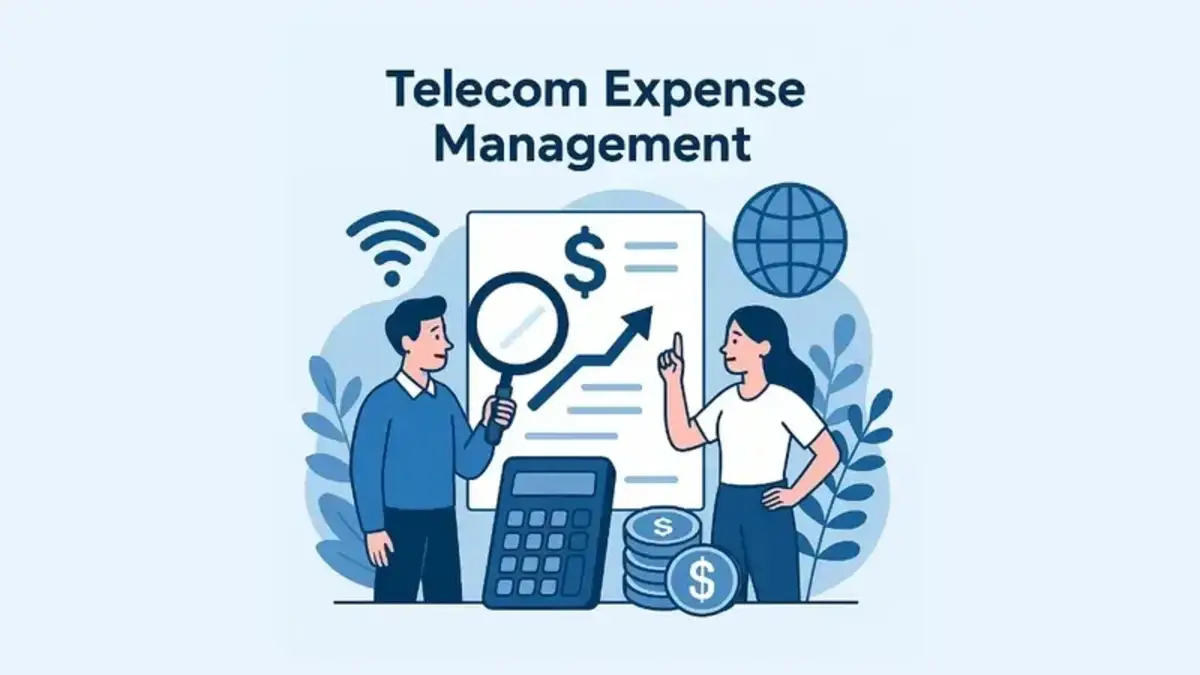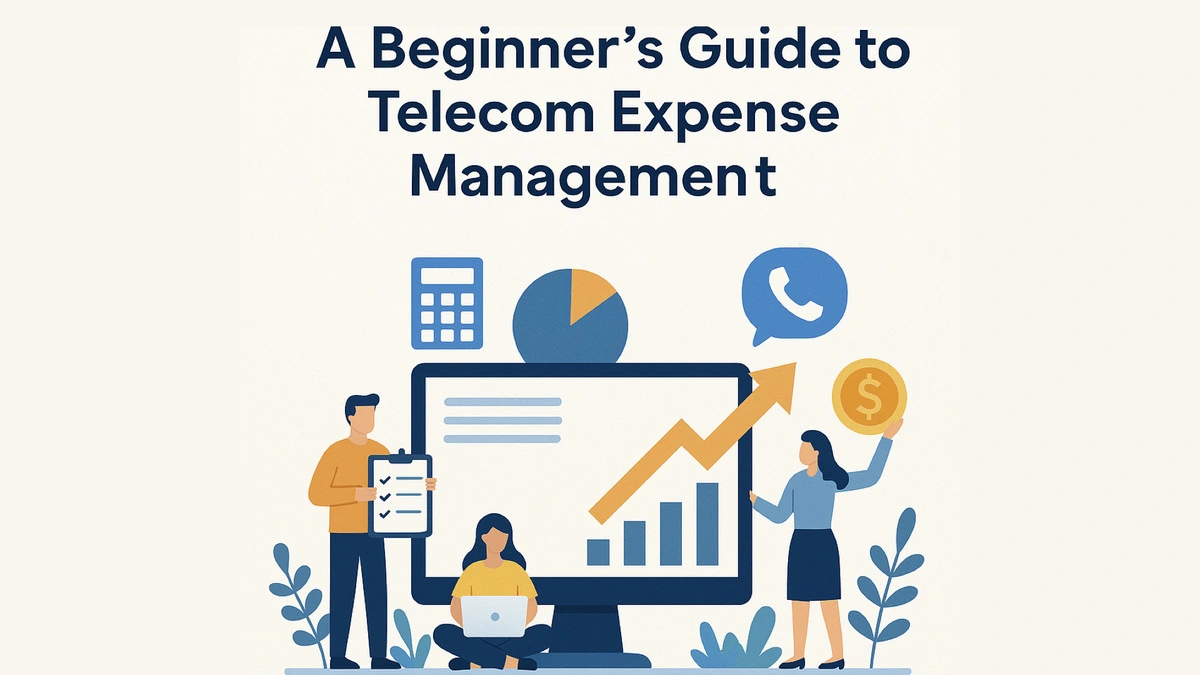Telecommunications are a fundamental part of doing business in today’s digital-first world. Whether it’s making voice calls, collaborating through video conferencing, or using cloud-based apps, companies rely heavily on their communication infrastructure. But as these systems grow more complex, so do the costs associated with managing them. That’s where telecom expense management comes in.
In this guide, we’ll walk you through the basics of telecom expense management, explain why it’s essential, and show you how businesses of all sizes can save money, improve efficiency, and gain control over their telecom environment. Whether you’re new to this concept or simply looking to reduce your current telecom spend, you’re in the right place.
What Is Telecom Expense Management?
Telecom expense management (TEM) is the process of managing, tracking, and optimizing all telecommunications-related services and costs within a business. This includes everything from mobile and landline phones to internet services, cloud platforms, and even VoIP (Voice over Internet Protocol) services.
TEM involves more than just reviewing your phone bill. It includes:
- Auditing current telecom services
- Monitoring usage and invoices
- Negotiating contracts with providers
- Identifying errors and overcharges
- Ensuring services match business needs
The goal is telecom cost optimization—maximizing the value of your communication systems while keeping costs as low as possible.
Why Is Telecom Expense Management Important?
Telecom services can be surprisingly expensive. According to various industry studies, businesses often overspend by 10% to 30% on telecom services due to billing errors, unused lines, outdated plans, or lack of contract negotiation.
Here are some key reasons why telecom expense management is essential:
- Cost Control: Without visibility into telecom expenses, businesses often pay for services they don’t use or need.
- Accurate Billing: Providers sometimes make billing errors, and catching them requires a detailed review.
- Efficient Operations: A clear picture of telecom infrastructure helps companies allocate resources wisely.
- Scalability: TEM supports growth by ensuring communication systems can scale without unnecessary cost increases.
- Strategic Planning: With solid data, IT and finance teams can make informed decisions about future technology investments.
Common Telecom Expense Challenges for Businesses
If you’re not actively managing your telecom costs, you’re likely facing at least one of the following issues:
- Duplicate or Unused Services: Companies often pay for lines or licenses that are no longer needed.
- Billing Errors: Inaccurate charges, taxes, or fees are common and frequently go unnoticed.
- Lack of Centralization: Multiple departments may manage telecom accounts, leading to inefficiency and lack of oversight.
- Contract Overpayments: Without routine reviews, businesses may continue paying outdated rates.
- Complex Vendor Relationships: Managing multiple providers can be confusing and time-consuming.
These issues highlight the need for telecom expense management as a proactive, structured process—not a reactive, once-a-year activity.
Step-by-Step: How to Implement Telecom Expense Management

1. Perform a Telecom Audit
The first step in any successful TEM strategy is conducting a telecom audit. This involves reviewing all existing telecom invoices, contracts, and service records to understand what you’re currently paying for.
Here’s what to look for:
- Are there lines or services you no longer use?
- Are you being charged for the correct services and at agreed rates?
- Are there discrepancies between usage and billed amounts?
A thorough telecom audit can reveal hidden opportunities to reduce telecom expenses almost immediately.
2. Centralize All Telecom Data
Next, centralize all your telecom data—contracts, invoices, and usage reports—into a single platform or database. This makes it easier to track trends, identify issues, and create reports.
Many businesses use specialized telecom expense management software for this. These platforms automate invoice processing, flag anomalies, and provide real-time dashboards.
3. Analyze Usage Patterns
Understanding how your business uses telecom services is essential for telecom cost optimization. For example, you may notice that certain employees consistently use less mobile data or that conference calls happen mostly during certain hours.
Use this data to right-size your services:
- Downgrade plans that are over-provisioned
- Eliminate unused lines or features
- Consolidate services where possible
4. Negotiate with Vendors
With data in hand, you’re in a strong position to renegotiate contracts. Telecom providers are often willing to offer better rates to retain customers, especially if you’re prepared with usage stats and competitor pricing.
Tips for negotiation:
- Ask for volume discounts if you’re managing services across multiple locations.
- Bundle services to reduce costs (e.g., internet + VoIP service).
- Review contract terms regularly—don’t let agreements auto-renew without scrutiny.
5. Move to VoIP Services Where Appropriate
Switching to a VoIP service can significantly reduce telecom expenses for many businesses. Unlike traditional phone lines, VoIP runs over the internet and often includes features like voicemail-to-email, call forwarding, and video conferencing at no additional cost.
Benefits of VoIP:
- Lower monthly fees
- Scalability
- Remote work compatibility
- Integrated communication features
Just make sure your internet infrastructure can support high-quality VoIP calls, especially if you have a large or distributed team.
6. Automate Invoice Validation
Manually checking every invoice is time-consuming and error-prone. Automated telecom expense management tools can streamline this process by:
- Automatically matching invoices against contracts
- Flagging unexpected charges
- Ensuring tax and compliance accuracy
By validating invoices automatically, you save time and avoid overpaying.
7. Establish Ongoing Monitoring and Reporting
TEM is not a one-and-done effort—it’s an ongoing process. Set up monthly or quarterly reporting to track key performance indicators such as:
- Total telecom spend
- Cost per user or location
- Usage vs. plan ratios
- Identified savings over time
This ensures continued accountability and progress toward telecom cost optimization goals.
How Telecom Expense Management Helps Reduce Expenses
A well-run telecom expense management program will:
- Eliminate billing errors
- Prevent waste from unused services
- Improve vendor terms through data-backed negotiations
- Enable smart transitions to more efficient technologies like VoIP
- Increase visibility and control over all telecom-related expenses
For example, a business that switches from outdated landline service to a modern VoIP service could cut monthly costs by 40% or more, while gaining new features and flexibility.
In another case, simply auditing mobile phone usage might reveal that 30% of your employees don’t need the unlimited data plans you’re currently paying for.
Telecom Expense Management for Small and Mid-Sized Businesses
You don’t need to be a large enterprise to benefit from telecom expense management. In fact, smaller businesses often feel the financial impact of telecom overspending more acutely.
Here’s why TEM matters for SMBs:
- Tighter budgets: Every dollar counts.
- Lean staff: Automated TEM tools reduce the burden on small IT teams.
- Growth stage: Scalable systems prevent runaway costs as you grow.
If you’re running a smaller operation, focus on the basics: conduct a telecom audit, consolidate your services, and consider migrating to a VoIP service to lower your communication expenses.
Do You Need a Telecom Expense Management Provider?
While many companies manage TEM in-house, others partner with specialized firms or use third-party platforms. These services offer:
- Expert telecom audits
- Access to industry pricing benchmarks
- Contract negotiation support
- Automated tools for invoice and usage management
Outsourcing can be especially beneficial if you don’t have the internal resources or expertise to manage complex telecom environments.
That said, even if you choose to handle it internally, implementing even a basic telecom expense management process can deliver significant savings.
Final Thoughts: Take Control of Your Telecom Costs
Telecom expense management may sound technical, but it’s really about gaining control—control over what you pay, what you use, and what you actually need. It’s about ensuring that every dollar spent on communication adds value to your business.
Whether you’re trying to catch billing errors, plan a switch to VoIP service, or simply find ways to reduce telecom expenses, the principles of TEM provide a roadmap to smarter, more strategic telecom decisions.
Don’t wait until your next painful phone bill—start auditing, optimizing, and taking charge of your telecom environment today.
Quick Summary: TEM Best Practices
- ✅ Conduct regular telecom audits
- ✅ Centralize your contracts and invoices
- ✅ Use usage data to right-size services
- ✅ Negotiate with vendors using data
- ✅ Consider switching to VoIP services
- ✅ Use software to automate invoice validation
- ✅ Monitor performance and savings regularly
By following these steps, you’ll not only reduce telecom expenses but also build a foundation for long-term efficiency and growth.


